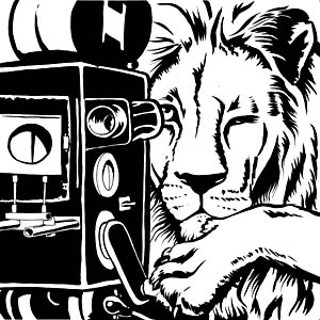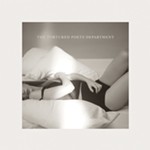Letters at 3AM
Crazy at the Flickers
By Michael Ventura, Fri., March 13, 2009

How wild were the early days of film? It was said that Henry Lehrman, while directing comedies on Mack Sennett's lot circa 1913, loosed lions upon unsuspecting extras as the cameraman cranked away (cameras were cranked by hand in those days). Hard to believe? I thought so. Then I'm watching Part 8 of Kevin Brownlow and David Gill's superb Hollywood (alas, the 1980 British TV miniseries is not on video or DVD – I taped it from TV). About three minutes into the doc, in a montage of silent comedy scenes, the legend is verified: You see one of Sennett's few standing sets, familiar in many of his comedies – sometimes a ballroom, sometimes a department store, sometimes a mansion. Long shot: two actors, alarmed at whatever's coming toward them. They run like hell. Into frame gallop two adult lions, a male and a female. The actors charge toward a staircase leading to the second level of the set. In between the actors and the staircase are maybe a dozen extras in costume, women and men, seemingly in shock. Some stand frozen, eyes fixed on the lions; some – after an instant of realization – scramble this way and that. They're not acting. The two actors bound up the stairway. The lions are right behind them, full tilt – those beasts aren't acting, either. The actors make the top of the stairs just ahead of the lions and run out of frame. The lions tear ass after them. Cut. End of excerpt.
Cavorting with wild beasts was a motif of early cinema, behavior we can take as emblematic of the dares people were willing to chance for the raw excitement of making a flicker (as movies were first called). Gloria Swanson in 1919, age 20, played the lead in Cecil B. DeMille's Male and Female. Clad in several layers of veils, Swanson is cast into a dungeon with a huge male lion. She lies on her stomach. Present were the cameraman and, in her words (from Brownlow and Gill's doc), "Mr. DeMille with a gun, a revolver in his hand, no one else but two trainers. Now let me tell you the sensation – [the lion's] paws, weight, on the back of my bare back. I was bare to the waist. His hot breath. Then when he roared it was like a thousand vibrators all over me. It was the most awesome, dangerous, fascinating ..." (her voice trails off; her eyes gleam). In the finished film, that sequence passes in mere seconds – seconds that Swanson and DeMille were willing to risk their existences for. Making "pictures," to use their term, was that important to them. (A week later, their lion mauled someone almost to death.)
Or Mabel Normand in 1923's The Extra Girl, in which she casually, blithely enters a cage with several lions. Pets 'em, too. Or the time Ms. Normand (still the most underrated player of the era) pulled a lion by a rope across a set. The gag is that her character believes she's pulling a big dog with a phony lion's mane; but it is, really, a lion. No tricks. There's Mabel, her back to the beast, the rope slung over her shoulder, hauling a reluctant lion some 20 yards across a set. Her only guard was a man off camera with a pitchfork. The lion resisted, jerked her back, she stumbled, the lion was upon her, the pitchfork man lunged, missed the lion, poked Mabel in the butt. Drew blood. The lion, apparently, was well-behaved, because after they tended to Mabel's butt, they reshot the scene later that day.
All of which is to say: Hey, filmmaker, how far are you willing to go to make a picture?
Biographies of the pioneer filmmakers outstrip their legends and read like novels – Charlie Chaplin, Mabel Normand, Buster Keaton, Roscoe Arbuckle, Lillian Gish, D.W. Griffith, Mary Pickford, Mack Sennett, Gloria Swanson, Cecil B. DeMille, Clara Bow, Louise Brooks. Gish, Chaplin, Pickford, and Keaton had performed professionally since they were as young as 7 (Keaton even younger). Most of the pioneers came from hardscrabble childhoods – as Sennett commented, "There were no dukes on the Mayflower." Few were schooled (yet Normand, Sennett, and Chaplin – among others – were surprisingly well-read). And many – Gish, Chaplin, Pickford, Normand – were entirely on their own when as young as 12 or 13. Some shined in but one film, then disappeared: Ruth Hart's touching, completely naturalistic performance in Griffith's 1909 The Light That Came or Cecile Arnold, in Chaplin's 1914 The Rival Mashers, in which she makes the most of one of cinema's first extended close-ups. Special effects, trick shots, trick lighting (any lighting but daylight) were virtually unknown until circa 1920; in the raucous 19-teens, the actors themselves were the special effects, taking falls and doing stunts with a graceful abandon that is, if anything, more eye-popping in our era of computer-generated effects than it was in those rough times. Maybe they weren't afraid of lions because nearly every time they appeared in front of a camera, the comedians, especially, risked life and limb.
In the context of their time, their pictures, especially the comedies, were more defiantly shocking than we give them credit for. In 1914, respectable women still went about in several layers of clothing, covered from head to foot, their long hair bundled under a wide hat (respectable gals did not go about with an uncovered head). Well, there's Mabel Normand, 1914, in Mabel's Strange Predicament, running around a hotel in pajamas, barefoot, long hair flowing, a spectacle more titillating than we can now imagine. But that doesn't compare with Roscoe Arbuckle's 1917 Coney Island, in which Alice Mann, for several minutes, sports only an almost sheer black body stocking, which leaves little to the imagination. And even that pales beside director Lois Weber's 1915 Hypocrites, a serious examination of America's moral hypocrisies. Weber was more technically adventurous with her camera than Griffith, and her feminism was uncompromising. In Hypocrites, Weber herself portrays the "Naked Truth" in a sheer white body stocking (and sometimes, to my eye, not even that); she is a naked, ghostlike woman spirit, witnessing the unkind, unfair, humiliating ways of so-called normal people. But sometimes social comment was made almost casually, as when, in DeMille's 1917 The Little American, Mary Pickford not only drives her own car (shocking!), but she takes her drive alone (twice as shocking!).
The social impact was deep, wide, and swift, especially for women. In 1915, women were heavily garbed. By the early 1920s, many were wearing hardly anything (from a 1915 point of view) – rather than hiding the body, clothing emphasized the body, influenced largely by Gloria Swanson's costumes in DeMille's films. In 1912, the only women to wear make-up were stage actresses and only when performing. But, with the harsh lighting of early films, lipstick and eye shadow were necessary for men as well as women to register their expressions. By 1920, cosmetics were a thriving industry.
Women had always worn their hair long. In 1923, to play a flapper in Flaming Youth, Colleen Moore cut her hair very short – in imitation, she said, of a Japanese doll. Short hairstyles for women became almost instantly acceptable. Another permanent innovation.
Family values were not much appreciated by these pioneers. From the first, in dramas and comedies alike, marriage was depicted as unmitigated hell. Coney Island expressed it succinctly. There's a fortune-telling machine – ask a question, put in a coin, and it ejects a card with your fortune. Question: "When will I marry and have a happy home?" Answer: "There ain't no such animal."
The flickers were, in short, disruptive and rebellious on a scale that dwarfs even the rock & roll of the Fifties and Sixties. Censorship was attempted, often; it failed, always. Americans seemed to have a consuming hunger for these visual disruptions and wanted nothing more than to imitate them. After all, if petite Mabel Normand could sit playfully with lions, wasn't anything possible?








